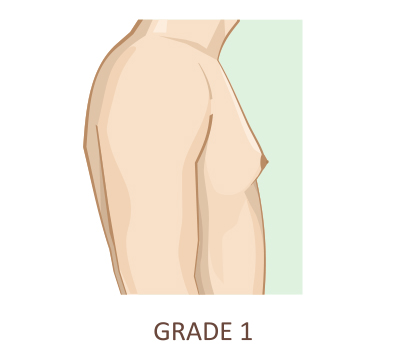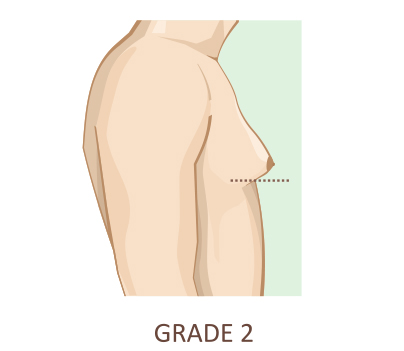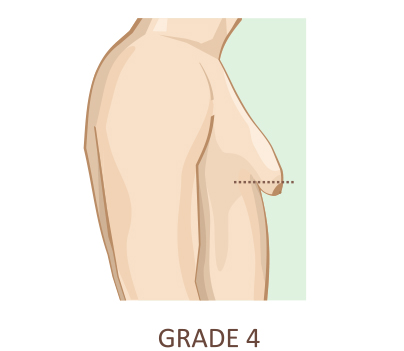
Select City
Select City
Do you feel that your chest is increasing in size and look more like female breasts? These symptoms may indicate gynecomastia (man boobs) and the condition can be bothersome for males. If you have enlarged breasts, you can get in touch with Pristyn Care.
Do you feel that your chest is increasing in size and look more ... Read More




Free Consultation

Free Cab Facility

No-Cost EMI

Support in Insurance Claim

1-day Hospitalization

USFDA-Approved Procedure
Choose Your City
It help us to find the best doctors near you.
Bangalore
Chennai
Coimbatore
Delhi
Hyderabad
Kolkata
Lucknow
Mumbai
Noida
Pune
Ranchi
Visakhapatnam
Delhi
Gurgaon
Noida
Ahmedabad
Bangalore
Gynecomastia, also known as man boobs or enlarged breasts, is a condition in which breast tissues start to develop in males due to hormonal imbalance or higher levels of estrogen. These overdeveloped glandular tissues can cause social and personal distress in males, making them feel uncomfortable or self-conscious.
Gynecomastia progresses gradually in four grades-
Besides the above classifications, gynecomastia is also divided into true and pseudo-gynecomastia. In true gynecomastia, only breast glandular tissues are present. Unlike this, in pseudo gynecomastia, only fat tissues are present in the chest, giving the appearance of female breasts. Generally, when gynecomastia presents, the individual often has both glandular and fat tissues.
• Disease name
Enlarged Male Breasts (Man boobs)
• Surgery name
Gynecomastia (Male Breast Reduction Surgery)
• Duration
1 - 2 Hours
• Treated by
Plastic surgeon

Fill details to get actual cost
To identify gynecomastia and differentiate between true and pseudo-gynecomastia, the doctor may do the following:
These tests aid the plastic surgeon in determining the safest approach for gynecomastia Surgery.
The treatment options for gynecomastia may include the following:
The most suitable method for gynecomastia Surgery is chosen by the doctor based on individual circumstances.
The standard and effective solution for gynecomastia is the surgical removal of overgrown breast tissues in males. The procedure involves removing the breast glandular tissues and fat to improve the chest contours. Gynecomastia surgery is performed on an outpatient basis and takes around 45-60 minutes approx.
The surgery involves administering general anesthesia and making a small incision around the areola to access the internal structures. A scalpel is used to excise the breast tissues, and the liposuction cannula is used to break down and remove the fat tissues. Once the required contours are achieved, the incision is closed with stitches (usually dissolvable) or left open to heal. The wound is covered with a bandage, and the patient is kept under observation for a few hours until the effects of anesthesia wear off.
Diet & Lifestyle Consultation
Post-Surgery Free Follow-Up
Free Cab Facility

24*7 Patient Support
Here are the top advantages of choosing male breast reduction surgery to reduce enlarged breasts over other treatment options.
The recovery after gynecomastia Surgery will take around 2 to 4 weeks. The exact duration will vary for each patient depending on the extent of surgery and the patient’s healing abilities.
The healing process will continue in the upcoming weeks, and the patient may need to take several precautions until the final results become apparent.
Typically, gynecomastia surgery is safe and has minimal risks. Still, there are some potential risks of the procedure, and some complications may arise during or after the surgery. These common risks and complications may include the following:
There may be other side effects of gynecomastia Surgery, such as swelling, bruising, inflammation, redness, etc., which are temporary and often resolve on their own without intervention. However, if these side effects persist for a long time, it may indicate infection or other complications. Therefore, it’ll be best to consult the doctor.
After male breast reduction surgery, the patient is advised to follow several guidelines for a smooth and successful recovery.
Immediately after the surgery, the patient will be on a liquid diet. The doctor will recommend switching to a solid diet gradually. The patient needs to eat healthy foods and drink plenty of water to provide the necessary nutrients. It’s also important to avoid drinking alcohol and smoking after the surgery for at least a month to get the desired results.
For the first 24 hours after surgery, the patient is advised to get plenty of rest. After that, restrain from performing any type of strenuous activity such as driving, operating machinery, or lifting heavy weights. The patient doesn’t have to stay in bed all the time and is free to walk and climb stairs. But it’s important not to push the body’s limits. As the body heals, the patient will be able to resume all activities without any hassle.
To ensure that the chest tissues stay in place and swelling subsides quickly, the doctor will suggest wearing compression garments for at least 2-3 weeks throughout the day. Over time, the patient can limit the usage of the garment up to 12 hours.
Throughout the recovery process, the patient will have to avoid taking medications like ibuprofen, aspirin, etc. These medicines can interfere with the blood clotting system and increase the risk of complications. If the patient needs to take other medicines on a regular basis, those should also be cleared by the surgeon.
On average, the gynecomastia surgery cost varies for each patient due to the following factors:
It’s important to note that cost should not be the only determining factor for gynecomastia Surgery. The patient should consider the quality of care at the surgical facility and the experience of the plastic surgeon. These factors will affect the overall surgery experience and also determine the success rate of the treatment procedure.
Leaving gynecomastia untreated usually has both physical and psychological impacts on the individual.
Physical Impact
Psychological Impact
To get proper gynecomastia Surgery, it’ll be best to consult a plastic or cosmetic surgeon. They will take a minimally invasive approach to gynecomastia Surgery to ensure that the surgery doesn’t have any aesthetic downside.
To get in touch with plastic surgeons of Pristyn Care, you can give us a call or fill out the appointment form. Our coordinators will discuss your schedule and book an appointment at a date and time at your convenience.
The duration of gynecomastia can vary from person to person. In some cases, gynecomastia may resolve on its own within a few months to a year. However, for some individuals, the condition may persist for a longer period, and surgical intervention may be required to address it effectively
Exercise alone is generally not sufficient to eliminate gynecomastia. While regular exercise and a healthy lifestyle can help reduce overall body fat and improve chest muscle tone, they may not eliminate the underlying glandular tissue enlargement associated with gynecomastia. Surgical options, such as male breast reduction surgery, are often necessary to remove the excess breast tissue and achieve the desired outcome.
The effectiveness of homeopathic medicine for gynecomastia is not supported by scientific evidence. Gynecomastia is primarily caused by hormonal imbalances or other underlying medical conditions, and homeopathic remedies have not been proven to address these root causes effectively.
Gynecomastia surgery is generally considered safe when performed by a skilled and experienced plastic surgeon. As with any surgical procedure, there are potential risks and complications, which can be minimized by choosing a qualified surgeon and following post-operative care instructions.
There is no specific medicine or medication that is universally considered the best for gynecomastia Surgery. Treatment options vary depending on the underlying cause and individual circumstances. Medications such as selective estrogen receptor modulators (SERMs) or aromatase inhibitors may be prescribed in some cases, but their use should be determined by the doctor.
No, gynecomastia surgery is performed after administering general anesthesia, which puts the patient to sleep and numbs the body. Thus, the patient doesn’t feel kind of pain or discomfort during the surgery. Once the anesthesia effects wear off, the patient may feel mild to moderate pain and discomfort, which will be managed by pain medications.
The duration of wearing a compression vest or garment after gynecomastia surgery can vary depending on the surgeon’s recommendations and individual healing progress.
Typically, the compression garment is worn continuously for a few weeks to support the healing process, reduce swelling, and provide optimal results. Your surgeon will provide specific instructions on how long to wear the compression vest and when it can be removed.
Gynecomastia surgery does involve incisions, and therefore, it may leave scars. However, skilled plastic surgeons make efforts to minimize scarring and place incisions in discreet locations such as the edge of the areola or in the natural chest creases. Moreover, as the scar heals, it will fade over time, and the doctor may recommend using scar reduction cream or other techniques to improve its appearance.
In general, gynecomastia surgery is covered by insurance when it’s deemed medically necessary. And even in this scenario, the patient must submit clinical evidence stating the symptoms and other medical concerns signed by a certified doctor. Without enough evidence, the insurance company may still deny the insurance coverage.

Grade I
This grade has only a minor level of enlargement in the breasts. A localized button of tissue starts to grow around the areola. The chest will only be slightly swollen, and it won’t be noticeable when you are wearing clothes. Thus, treatment is usually not required at this grade.

Grade II
At this grade, the male breast tissues expand to the width of the chest. The pectoral muscles are almost completely covered with the breast tissues, but the edges are still less prominent. At this grade, the doctors prescribe a diet to reduce the estrogen levels in the body. Surgery can also be done if the patient feels concerned.

Grade III
It is a moderate stage of breast development at which the breast tissues become completely visible through clothes. The excess skin continues to grow and become more prominent. The breasts also have more firmness at this stage. The patient can opt for surgical treatment at this stage too.

Grade IV
At this grade, the development of breasts is almost complete. It is the most severe stage as there is a large amount of excess skin. At this stage, the condition becomes a major obstacle in the man’s social life as the chest looks like breasts. Thus, the doctor recommends undergoing male breast reduction surgery.
Darshan
Recommends
Resolved my all queries I give 5 star
Rohit Singh
Recommends
My best experience with doctor surgery and behaviour with talking with patient I think Dr prateek thakur is best surgen in delhi ncr
Utkarsh
Recommends
Dr. Prateek Thakur made me understand everything step by step and was clear with the outcomes
Shivaji Rathav
Recommends
Hello Jawahar from Coimbatore is this person. My gynecomastia surgery was performed.I had a really positive experience. They were very careful. In particular, Dr. Lohit Sai performed a straightforward procedure with ease. Though not uncomfortable, the pre- and post-operative procedures went really well, and now
Kanta Hazra
Recommends
Gynecomastia surgery done at pristyncare Good treatment, and excellent behavior stood out. Recommend choosing him.Suggest Alok schedules appointments based on the doctor's availability for better patient experience.
.svg)
.svg)